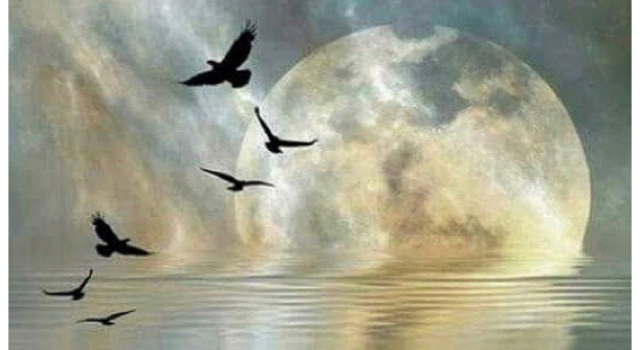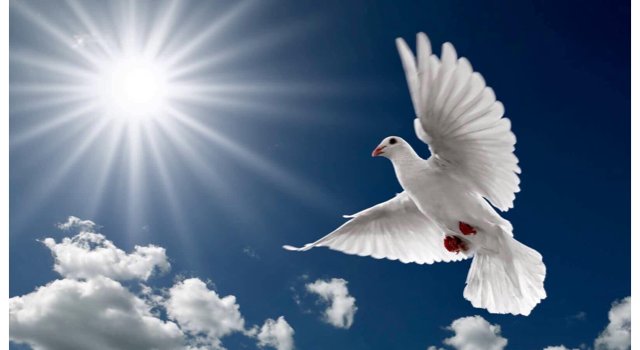The Shocking, Needless Deaths Of At Least 55 Children. A record 142,490 children in England,…

Germany Invaded Belgium.
In August 1914, Germany invaded Belgium, despite knowing that its independence was guaranteed by a Britain that regarded treaty obligations as sacrosanct.
Adopting strategic plans that had been in place since 1905, the Germans believed they could be in Paris before the tiny British Army of the day could respond.
But thwarted in Flanders and North-West France, the Germans braced themselves for the mass mobilisation of the entire British Empire.
Children Died Along The Way.
By the autumn of 1944 it was clear to many that Nazi Germany would be defeated.
And yet, instead of doing the decent thing and waiving a white flag, the Germans allowed the war to drag on for another nine months, resulting in millions more deaths and unparalleled destruction.
A fear of the Red Army is often put forward as the main reason which, as events would prove, was not without justification.
During the evacuation of Breslau in Silesia in January 1945, there were not enough trains to cope with the refugees, and many children were trampled to death in the stampede to get into the few carriages.
Some 100,000 people – mostly women and children – fled the city on foot and headed west along icy roads and through snow. Hundreds of children died along the way, and their bodies were left by their mothers in roadside ditches.
Some decided it was better to take their own lives.
Entire families, fearing the approach of the Russians, bound themselves together and jumped into rivers.
Others poisoned themselves and their children in what can only be described as a kind of mass hysteria.
Men who refused to fight for the collapsing Nazi regime were treated with the utmost brutality.
They were either summarily shot or hanged from trees with notices around their necks that read: ‘I’m a deserter and have refused to protect German women and children’.
Shockingly, even after the war had ended, military kangaroo courts continued to sentence such ‘traitors’ to death.
The Flammenwerfer.
The Flammenwerfer, was developed by a German scientist, Richard Fielder.
It used pressurised air (or, later, carbon dioxide or nitrogen) in a cylinder that belched a jet of burning oil 50 feet or more.
Having tested flame-throwers in 1900, the German army created three specialist battalions to use them during World War One.
A surprise attack on British troops was launched on July 30, 1915 at Hooge, two miles east of Ypres in Flanders.
The effect was terrifying to the British, and their line retreated with the loss of 751 infantry and 31 officers.
After the battle at Hooge, the Germans launched more than 650 flame-thrower attacks, but eventually the allied forces dealt with them more effectively.
The Battle Of Fromelles.
The Battle of Fromelles in July 1916 is widely acknowledged by historians as a military disaster.
The losses were devastating for Britain, and for Australia it remains one of the largest battle losses in the space of 24 hours of any war.
On that fateful day 1,547 British and 5,533 Australian soldiers were killed, wounded or missing presumed dead.
The engagement was not even a battle in the conventional sense.
The aim of the allies was to provide a diversion to stop German troops joining the Battle of the Somme, some 50 miles south of Fromelles.
Allied soldiers were told to regain ground captured by the Germans.
They successfully did this, breaching the first German line.
But the second line was not where the troops had been told it would be – and this proved to be a disastrous mistake.
After initially bombarding German frontline positions, the allies came under attack themselves from German artillery.
Forced out into no-mans land, the British and Australian troops were ruthlessly cut down by shells and machine guns.
American Soldiers Were Told It Was To Be A “Glorious Adventure”.
Beautiful ideals were painted for our boys who were sent out to die.
The was the “war to end wars”.
This was the “war to make the world safe for democracy”.
No one told them that dollars and cents were the real reason.
No one mentioned to them, as they marched away, that their going and their dying would mean huge war profits.
No one told these American soldiers that they might be shot down by bullets made by their own brothers here.
No one told them that the ships on which they were going to cross might be torpedoed by submarines built with United State patents.
They were just told it was to be a “glorious adventure”.
Thus, having stuffed patriotism down their throats, it was decided to make them help pay for the war, too.
So, we gave them the large salary of $30 a month.
All that they had to do for this munificent sum was to leave their dear ones behind, give up their jobs, lie in swampy trenches, eat canned willy (when they could get it) and kill and kill and kill – and be killed.
( Major General Smedley Darlington Butler, 1881 – 1940 )
The First Modern War Correspondent.
William Howard Russell, usually considered to be the first modern war correspondent, spent 22 months covering the Crimean War for The Times.
Everything had to be sent by post – hence the term ‘correspondent’.
He wrote about the Charge of the Light Brigade but made his name with exposes of the conditions faced by the ordinary troops.
He helped change the way war was reported – for the first time the public could read about the reality of warfare.
He reported the barbarous way that wounded troops, in particular, were treated.
The public backlash following his scoops forced the government to re-evaluate its treatment of injured troops and led to the Florence Nightingale-inspired revolution in the medical treatment and nursing of wounded soldiers.
The Collision Of The Queen Mary And The Curcoa.
On October 2, 1942, the Royal Navy destroyer Curcoa was escorting the Queen Mary – bound for Britain – and tried to cut across its course.
It misjudged the speed and distance, was torn in two by the collision and sank – causing 338 deaths.
The Queen Mary was travelling at 30 knots (35mph) and would have continued for a further six miles before coming to a halt, where she would have been a target for German submarines.
So she continued on course at full speed.
They Should Never Be Forgotten.
It’s difficult to imagine the darkness that hung over Britain 70 years-ago.
Almost alone in the world, we were standing firm against Adolf Hitler and his mighty army.
The struggle we faced was epic and the chance of success against the Nazi war machine was desperately low.
But thanks to the courage of our brave fighter pilots we were saved.
Pilots from Britain, The Commonwealth and Poland took to the skies in Hurricanes and Spitfires to fend off the Luftwaffe.
They wrecked Hitler’s plans to invade and changed the course of history.
The heroism of those who took part in the Battle of Britain should never be forgotten.
As time passes, our memories can fade.
And new generations who have never witnessed the terror of war will find it hard to imagine what this country went through.
In the World War, we used propaganda to make the boys accept conscription.
They were made to feel ashamed if they didn’t join the army.
So vicious was this war propaganda that even God was brought into it.
With few exceptions our clergymen joined in the clamour to kill, kill, kill.
To kill the Germans.
God is on our side.
It is His will that the Germans be killed.
( Major General Smedley Darlington Butler )
The Largest Naval Air Battle, Marianas, 1944.
The largest naval air battle of World War 2 occurred during the US invasion of the island of Saipan in the Marianas.
The Japanese fleet under Jisaburo Ozawa hoped to inflict a defeat on the US navy, but the position of the Japanese ships was betrayed.
On June 19, 1944, Ozawa sent off 373 aircraft to attack the U.S. fleet.
The Americans were waiting, and in a short battle 242 Japanese planes were shot down for the loss of 30 American aircraft.
A prisoner of war is a man who tries to kill you and fails.
And then asks you not to kill him.
( Winston Churchill )
The gratitude of every home in our Island, in our Empire, and indeed throughout the world, except in the abodes of the guilty, goes out to the British airmen who, undaunted by odds, unwearied in their constant challenge and mortal danger, are turning the tide of the World War by their prowess and by their devotion.
Never in the field of human conflict was so much owed by so many to so few.
( Winston Churchill, August 20, 1940 )
Special Operations Executive.
Throughout the course of World War 2, hardly anyone in Britain was aware of the existence of the elite Special Operations Executive (SOE).
Even now, and 65 years after the end of the war, memories of the SOE have slipped away, largely unheralded, into the mists of time.
If you visit the National Motor Museum at Beaulieu in the New Forest, where the SOE was based, there’s a small exhibition tucked away, and a plaque on a wall on the estate, but for the most part even the locals, now as then, remain ignorant of the key role the place played in helping to defeat Hitler and the Nazis.
These unsung war heroes, known as ‘The Hush-Hush Troops’, carried out secret field operations which included espionage and sabotage behind enemy lines, and facilitating and helping to coordinate resistance movements in occupied territories, chiefly France.
The Glasshouse.
The Glasshouse was the original military prison in Aldershot, Hampshire.
Built in 1870, it got its name because of its large glass lantern roof.
But despite its pleasant sounding moniker, conditions were extremely harsh and the term ‘glasshouse’ later became army slang for all our military prisons.
Only those who would be called upon to risk their lives for their country should have the privilege of voting to determine whether the nation should go to war.
( Major General Smedley Darlington Butler )
May 31, 2010.
Israeli naval commandos shot dead 16 people and wounded over 30 as they attacked an unarmed humanitarian and civilian flotilla – in international waters – trying to bring desperately needed aid to Gaza.
The First Naval Battle.
The first naval battle of the ‘hundred years war’ (1337 – 1453) was at Sluys, France in 1340.
The French King, Philip VI, was preparing to invade England from Flanders, but his fleet was surprised at dawn at Sluys.
The English attacked from the east with the rising sun blinding the French crossbowmen, while illuminating their own ships perfectly for the English archers.
Conservative estimates put the French losses at about 190 ships and 18,000 men, including both admirals.
Such was the scale of the victory that the English joked the fish were speaking French because of the number of bodies in the sea.
It was one of the most crushing victories in naval history, and ensured that the rest of the war would be fought on land.
Slaughter And Suffering On An Unimaginable Scale.
For three years, German armies rampaged across the Soviet Union.
Inflicting slaughter and suffering on an unimaginable scale.
In total, around 8.7 million Soviet soldiers were killed during the war..
Along with 18 million Soviet civilians.
The My Lai Massacre.
Shocking images of a South Vietnamese village being burned and dozens of its civilian residents being left for dead first appeared in the relatively obscure ‘The Plain Dealer’ on November 20, 1969.
The photographs, which brought the world’s attention to the massacre, raised the question of whether they portrayed what they purported to.
These were the days before it was easy to manipulate an image.
But the photographs, taken by Ronald Haeberle, a U.S. army sergeant who witnessed the killings by U.S. soldiers in March of 1968 while on assignment with them, were genuine.
To its credit, The Plain Dealer went ahead with publication despite pressure from the U.S. army.
It took guts for a paper of its size to do so.
That Will Smash The War Racket.
Let the workers in these plants get the same wages, all the workers, all presidents, all executives, all directors, all managers, all bankers, yes, and all generals and all admirals and all officers and all politicians and all government office holders, everyone in the nation be restricted to a total monthly income not to exceed that paid to the soldier in the trenches!
Let all these kings and tycoons and masters of business and all those workers in industry and all our senators and governors and majors pay half of their monthly $30 wage to their families and pay war risk insurance and buy Liberty Bonds.
Why shouldn’t they?
They aren’t running any risk of being killed or of having their bodies mangled or their minds shattered.
They aren’t sleeping in muddy trenches.
They aren’t hungry.
The soldiers are!
Give capital and industry and labour thirty days to think it over and you will find, by that time, there will be no war.
That will smash the war racket, that and nothing else. Maybe.
( Major General Smedley Darlington Butler, 1881 – 1940 )



This Post Has 0 Comments